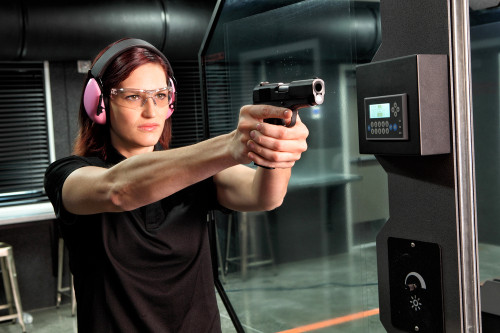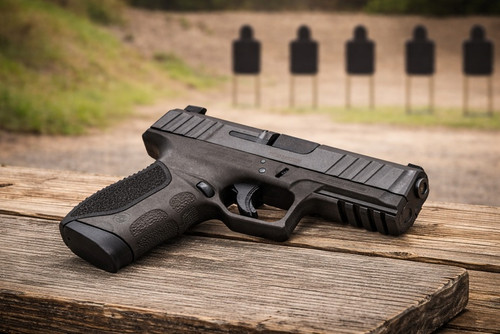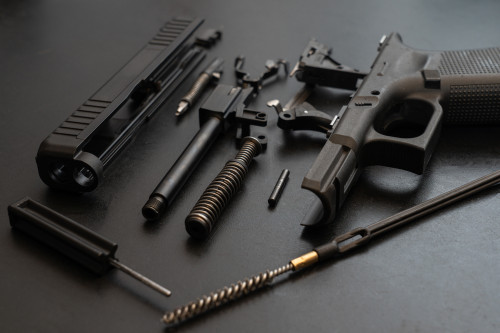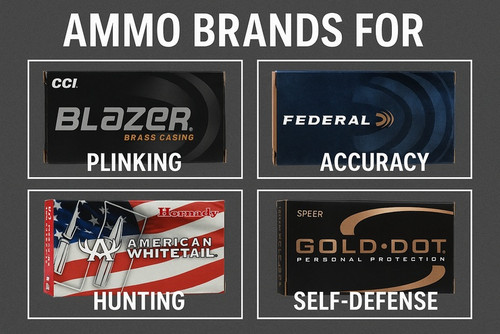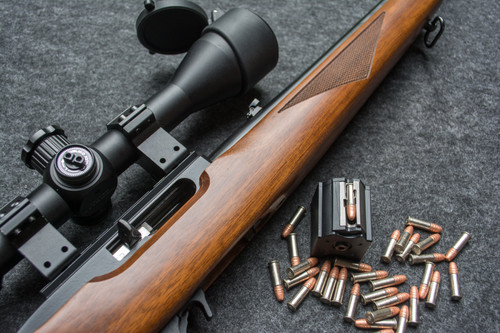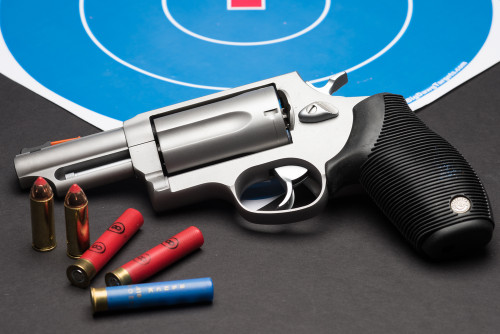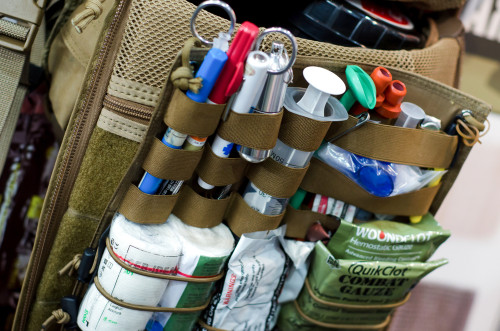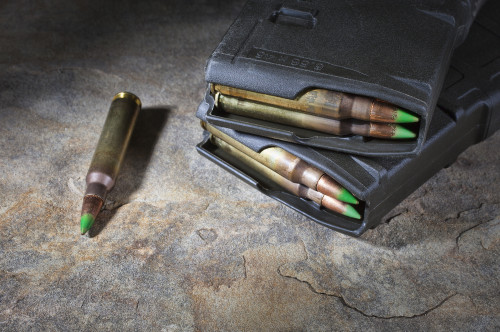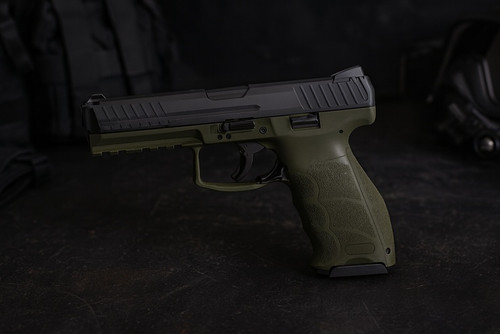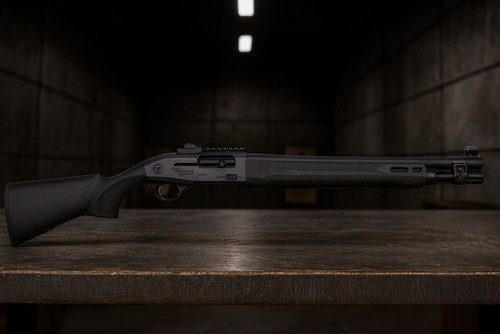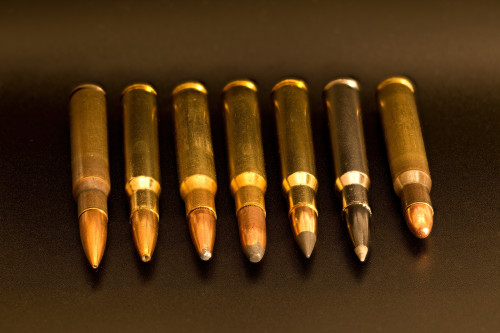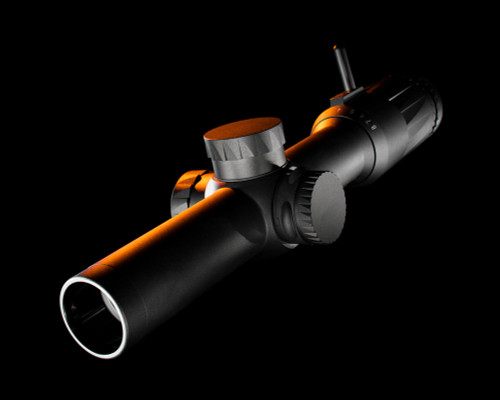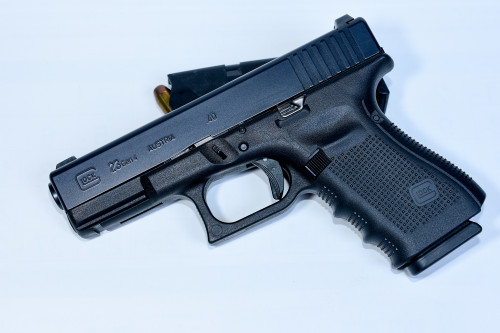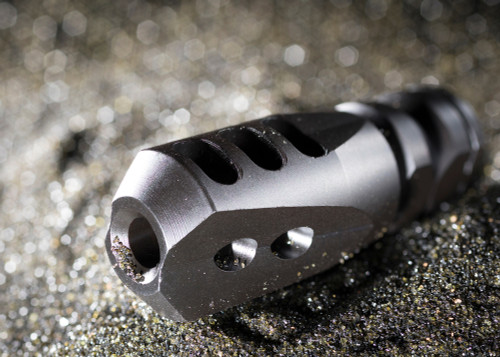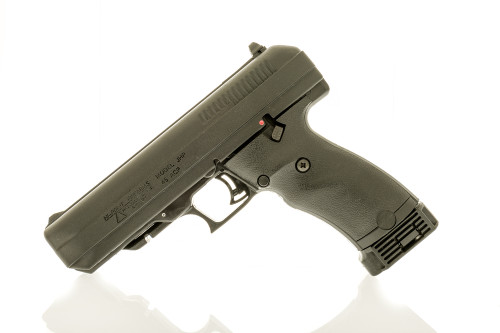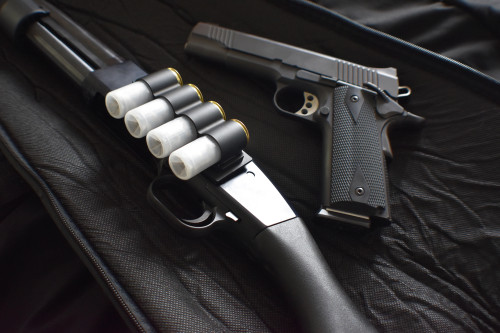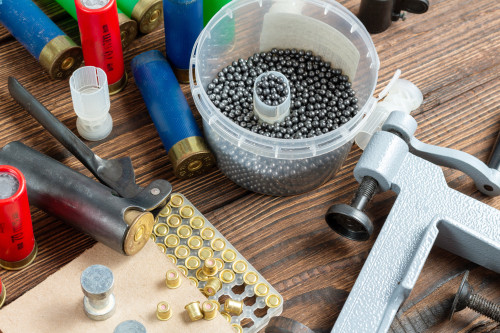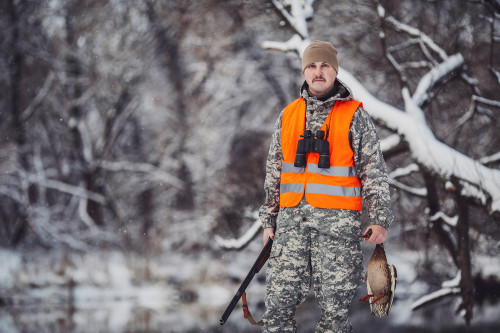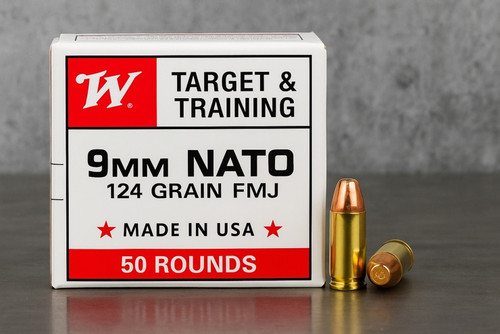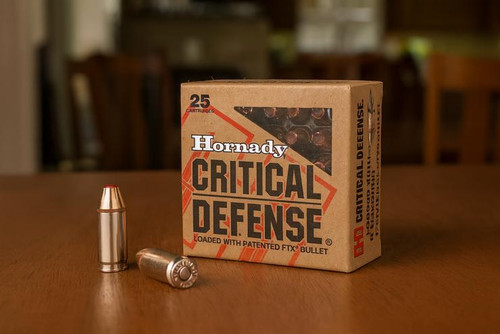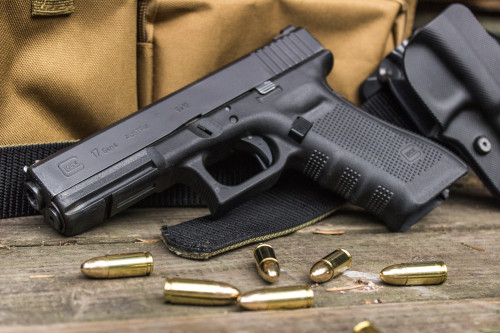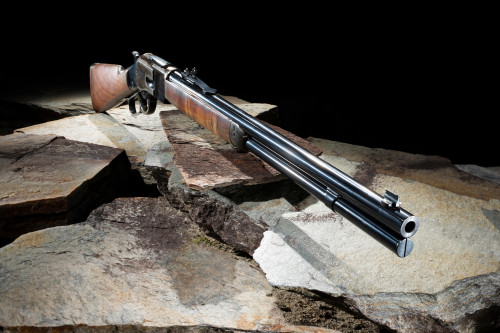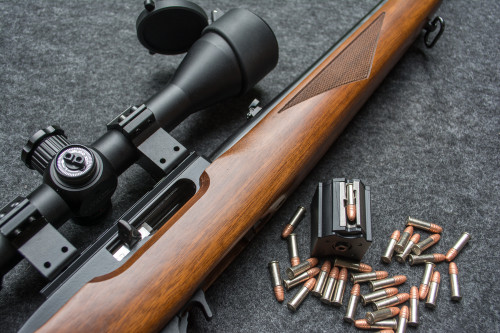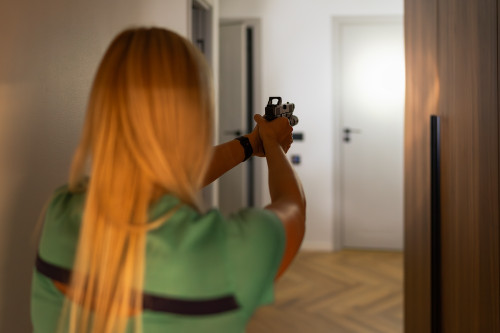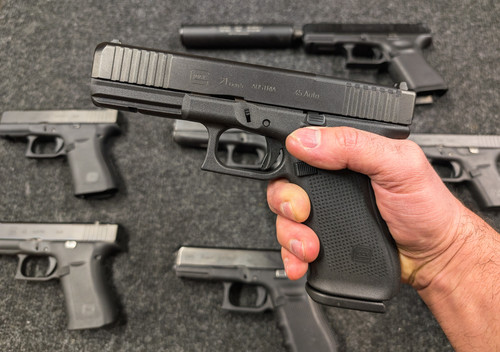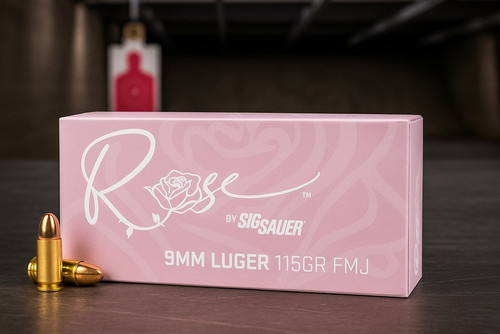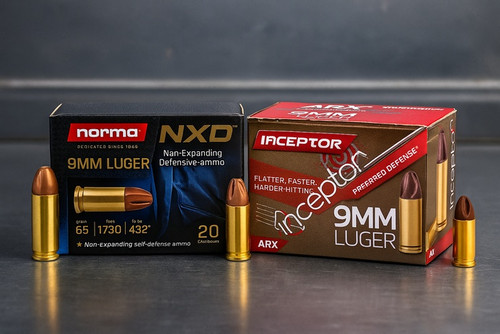It’s not uncommon for women to approach buying a handgun with hesitation, and many struggle with choosing the right one for self-defense. After all, a gun could save your life, so the stakes are high.
Aside from that, the stereotypical idea that shooting is primarily a male activity has made many women doubt their own abilities with firearms. Questions of anatomy and strength are always floating around when a woman asks, “Which gun is right for me?”
While that question is more complex to answer, one thing is certain: the second amendment is right for you.
But just like any other important purchase, finding the best handgun for your needs requires research and education. Being an informed buyer gives you confidence in the gun shop and on the range. That confidence translates to a higher success rate in high-stress scenarios, and if you’re a mother, can trigger your maternal instincts when it matters most.
If you’re a woman who wants to protect herself or her family, you’re in good company. We’ve developed this buyer’s guide just for you. In this list, you’ll find the best handguns for women for self-defense, prioritizing key features to ensure a reliable response — every time.
(Source: https://www.nrawomen.com/content/sewing-the-seeds-of-personal-protection)
Why Women Need to Carry Handguns
While men are still more likely than women to own a handgun in 2024, the portion of women gun owners in the United States has risen from 13% to 22%(as of 2022) in just over a decade. While there are several reasons women have been arming up, one motivation is clear: self-defense. According toupdated data from the World Health Organization (WHO), 1 in 3 women have been the subject of physical and/or sexual violence in some form. As more and more women come to grips with the gruesome reality that the world simply isn’t a friendly place, many are taking their safety into their own hands.
Despite these trends, many women still find handguns (especially revolvers) intimidating. A .357 Magnum blast can be jarring. However, owning and operating a handgun exercises a constitutional right to defend oneself legally.
What’s more, hundreds of thousands of women law enforcement officers employ handguns as duty weapons to protect themselves daily. These same officers often train with the same model, caliber, or size handgun. This repetition ensures a trained response should a high-stress situation require them to call upon their weapon. Highly concealable and much easier to hold, handguns provide a versatile platform for women to defend themselves in any situation.
(Source: https://www.agirlandagun.org/top-10-female-shooters/)
What Women Should Consider When Choosing a Handgun
No matter what reason you have for purchasing a handgun, the first thing to consider is the purpose of the firearm. Determining what you’ll use the handgun for will help inform your buying decision.
Once you’ve identified why you want to purchase a handgun, the comparison shopping begins. Here are a few things to consider to determine the best gun for you:
Range Testing
Many beginners think buying a handgun starts at the local gun shop. You handle a few pistols and choose one that feels good and looks appealing, right?
While this is a good start, it's crucial to go beyond aesthetics and perform a full comfort test at the range. Experiencing the noise, recoil, and muzzle blast leaves you with an impression — one that can make it much easier to choose the best handgun for you.
Want to find your ideal handgun? Take our quiz to find the best pistol for your shooting goals.
Responsible gun ownership means being able to handle and carry your firearm safely, especially if it’s for protecting yourself and your loved ones. This also means having a serious discussion with your family about what gun ownership means in your home and implementing safety measures to prevent accidents.
Ergonomics
The ergonomics of a gun vary among manufacturers, calibers, sizes, and types. A revolver feels different than a compact or a full-size semi-automatic handgun. Familiarizing yourself with a few handguns, especially by handling and shooting them on the range, will help you get a feel for this type of self-defense weapon.
The most ergonomic handguns make their operation intuitive, from the safety and magazine release button locations to how the gun sits in your hand. After all, a sure grip could mean the difference between defending yourself successfully and finding yourself in trouble. If you can’t handle the weapon confidently, you’re giving the bad guy an opening.
Hand Size
Women tend to have smaller hands than men. But smaller hands don’t necessarily require a smaller gun. It’s best to strike a balance between enough weight in the gun to reduce recoil and a size that suits your intended purpose. A compact model can give you the best of both worlds.
Some handguns are sized perfectly for your hand but still don’t feel right. One size doesn’t fit all. The defining factor is how the gun fits in your hand, no matter how many tactile surfaces it offers for grip.
Low Recoil
Caliber plays a prominent role in the amount of recoil you experience firing a handgun. However, low-recoil handguns also tend to have a particular recoil spring that reduces the feedback to the shooter. Many beginners struggle with overcoming recoil, but doing so is crucial for target engagement and shooting accuracy.
With low recoil, handgun shooters experience less muzzle flip (where the handgun breaks upward after the shot, causing you to shoot too high). The lower the recoil, the less chance of this happening. Less muzzle flip shortens the time between shots, which can make a significant difference in self-defense situations.
Slide Serrations
Side serrations, found along the top of the pistol, can also affect how a gun feels in your hand. They provide tactile feedback to your fingertips as you rack the slide.
The pattern of the slide serrations isn’t as important as how confidently you can grip the slide as you rack it back. It might feel rough and callous to grip the slide, shove it backward, and release it, but this is a crucial movement in operating a handgun. If you can’t rack the slide, you can’t use the gun.
Trigger Pull
Measured in pounds, trigger pull is how much force it takes to pull the trigger. A trigger pull of four to six pounds is standard for handguns. A heavy trigger pull can complicate high-stress situations where you lose most of your fine motor skills (which can create accuracy issues at the worst time). Of course, the key here is range testing. You need to be able to pull (or press through) the trigger of your defense gun quickly, with live ammo, multiple times in a row.
(Source: https://www.nrablog.com/articles/2016/6/7-tips-for-new-women-shooters-from-women-shooters)
Handgun Types: A Few Choices
When you go shopping for a gun (online or in a store), you’re likely to see a lot of terms describing the variations in certain gun models. These are not all “basically the same.” In fact, each one can have big effects on your use of the firearm. It’s your job to educate yourself and make the best choice for your shooting goals. Here are some of the variations you'll need to choose from:
Two Basic Actions
Revolvers, derringers, and semi-automatics make up the majority of handgun types.
- Revolver: Revolvers tend to have more recoil than semi-automatic handguns and incorporate a revolving cylinder that holds the bullets until fired. Reloading a revolver can be easier than reloading a handgun magazine. Single-action revolvers require manually cocking the hammer, while double-action revolvers move through cocking and firing with one long trigger pull. A revolver’s heavy trigger pull can also make it a difficult first-time gun for some women.
- Semi-automatic: Though revolvers are less prone to malfunction, semi-automatic handguns are some of the most popular models in the firearms industry. Also known as “semi-autos,” these handguns require you to cock the hammer once before you can fire through the magazine at will (one shot for each trigger pull). Semi-auto handguns absorb more recoil than revolvers and come in several shapes and sizes.
You may also see references to “ striker-fired” or “hammer-fired,” referring to the action of the firearm. A hammer-fired handgun’s slide is easier to rack, but is more prone to malfunction than a striker-fired pistol, which is the more common configuration. In a striker-fired handgun, the action is sealed against the elements.
Size
When browsing handgun specs, pay attention to “overall length.” This is a measurement from the muzzle end to the opposite end of the pistol, which demonstrates the handgun’s size. This measurement is critical in concealed carry when a compact footprint is key.
In general, handguns come in various sizes, from subcompact and compact to full-size.
- Full-size: Most full-size handguns have 4-inch long barrels (or longer) and a large frame. Full-size semi-autos can handle larger calibers but are harder to conceal. Gun owners tend to employ full-size handguns in home defense and competition shooting applications.
- Compact: These semi-autos have up to 4-inch barrels and are best for concealed carry. A reduced grip size and compact frame speaks to the main use of these handguns, similar to the difference between a travel-sized tube of shampoo and a full-size bottle.
- Subcompact/Micro-compact: With barrels shorter than 3.5 inches, subcompact handguns, or “pocket pistols,” have a one-inch-wide grip and a further reduced footprint.
Many handguns in the list below are semi-automatic, though we have included one revolver. Concealed-carry handguns are often compact or subcompact since they fit snugly in a holster and on your person.
Magazine Capacity
Most handgun magazines hold around 10 rounds maximum. However, the exact number varies between manufacturers. A 10-round magazine means the handgun holds 10 bullets, which is also compliant with the high capacity magazine ban in California.
When you see “+ 1,” that means the handgun holds the stated round capacity with an additional round in the chamber.
You’ll also want to pay attention to the stack (how bullets are aligned in the magazine):
- Single-stack: The more traditional configuration for a handgun magazine. It means rounds are stacked one on top of another in a single row. Usually this is fine (with the proper training, one round is all you need). But if it doesn't compromise concealability, why not pack a little more heat?
- Double-stack: This means the rounds are staggered in a zig-zag pattern, which allows you to fit more rounds in a shorter grip. In the past, double-stack magazines were generally girthier than their single-stack counterparts. However, modern handgun designs manage to offer double-stack capacity in a thinner magazine. Check out the Springfield Hellcat, for instance.
Understanding Ammo
The most common candidates for handgun pistol calibers include:
Each round is larger than your average .22 Long Rifle (LR) varmint caliber.
The .380 ACP round can stop most attackers. However, it doesn’t have the recoil and stopping power of the .45 ACP, which can scare many women and new shooters alike. Both types of ammunition are large enough to affect the grip size of a handgun, potentially making it harder for someone with smaller hands to control.
No matter what caliber you choose, you’re going to want to use hollow point rounds for self-defense. As soft material (like the belly of a bad guy) fills the cavity in the hollow point bullet, the round expands, blooming out like a deadly flower. This expansion creates more hydrostatic shock resulting in greater stopping power and more damage to your target —- without over penetration (which is common in full-metal-jacket ammo).
This means you can still really tear up a bad guy without that bullet flying through the other side of them (and into a loved one).
(Source: https://www.ebay.com/itm/203554261944)
Concealed Carry Guide for Women
Due to differences in body shape and clothing styles, women have both unique challenges and advantages over men when it comes to concealed carry. Here are a few key considerations to help you carry more effectively:
On-Body Carry Options
The safest option for concealed carry is to carry the firearm on your person. When doing this, it’s important to choose clothing that aids in concealment. Yoga pants or tight-fitting shirts might not be the best option here (unless you’re jogging). However, flowy, patterned tops can help break up the outline of a firearm. Here are a few common concealed carry methods to consider:
- Inside the Waistband (IWB) Carry: Ideal for women who frequently wear pants (or skirts with sturdy waistbands), IWB holsters can be positioned around the waist, with popular locations being appendix (front), behind the hip, or the small of the back.
- Belly Band: These are popular for their versatility and comfort. Belly bands can be worn with or without a belt and suit a variety of clothing styles, including dresses and yoga pants.
- Thigh Carry: Perfect for dresses or skirts, thigh holsters offer deep concealment and are worn on the inside of the thigh, secured with a garter belt for stability.
- Bra Carry: These provide deep concealment for small firearms, but their effectiveness depends on body shape and bra type, making them more suitable for some women than others.
- Ankle Carry: Ankle holsters can be effective for carrying a backup weapon or when other methods aren’t feasible. However, these are harder to conceal and incredibly uncomfortable, so we’d only recommend them as a last resort.
NOTE: Not all of these methods will work for everyone. The best way to determine your ideal carry method is to try out different options (and different holsters) to see which one offers the best combination of comfort and accessibility. If it’s too cumbersome, you’re less likely to carry your firearm when you need it most.
Choosing a Holster
For any of the above on-body carry options, you’ll need to invest in high-quality holsters. Read that again.
You can’t just stuff your firearm into your pocket or your waistband and expect that to be secure enough. As soon as you start running for your life (which you should do in most cases instead of drawing your gun), it’s likely to fall out.
Also, it’s wise to have at least one dedicated holster for each firearm you plan to carry concealed. Whatever holster(s) you choose, securely retaining the firearm and fully covering the trigger guard are top priorities. Those are the bare minimum requirements — but it should also fit as comfortably as possible on your body and work well with your chosen carry position.

Safariland Vault Duty 1 For Glk 17/19 Tlr1 Rh
$190
Safariland
Prices accurate at time of writing
TIP: Stay away from the cheap, flimsy nylon holsters. Kydex (and Kydex-like) holsters are the superior choice. They’re far more durable and generally molded to fit your specific firearm.
Off-Body Carry Options
If you need to, you can carry the firearm off of your person in some way. However, the downside to this is reduced access. It also isn’t as safe as on-body carry. At the same time, as a woman, you have a few options that may work out in your favor:
- Concealed Carry Purses: Designed with dedicated firearm compartments, these purses offer convenience (easy, inconspicuous concealed carry) but mandate slower draw times and increase the risk of theft. You may accidentally leave the purse somewhere in public, or someone may steal it from you on the street. If you have a gun in that purse, the situation just got much worse than it already would be.
- Fanny Packs: Not that men can’t wear fanny packs (no judgment), but a woman with a fanny pack may be a bit less noticeable. At the same time, off-body carry methods all sort of have the same problems: people can steal your gun and it takes longer to draw your gun. Those don’t present great odds for anyone in a deadly force situation.
Remember, concealed carry is highly personal, and what works for one woman may not work for another. Finding the most effective and comfortable method often requires trial and error. Joining women’s shooting groups or seeking advice from experienced female carriers can provide valuable insights and support on your concealed carry journey.
11 Great Handguns for Women to Carry in 2024
If you’re a woman looking to carry a handgun, here are our top picks for concealed carry, self-defense, and other applications:
1. Glock 43
| Caliber | Round Capacity | Trigger Pull Weight | Grip Safety |
|---|---|---|---|
| 9mm | 6 | 5.39 pounds | No |
The Glock 43 is a striker-fired pistol chambered in 9mm. This handgun is easy to conceal and sports a crisp trigger. While there is no grip safety for additional protection, it features the Glock Safe Action Safety System, complete with three internal safeties. As a single-stack handgun, it weighs almost 18 ounces.
This high-quality handgun is perfect for everyday carry (EDC) because it has a sub-four-inch barrel, a small slide, and a well-made frame. It comes with two single-stack magazines from the factory, each holding six rounds. The magazine catch also makes it easy to remove the magazine for reloading.
One of the best things about this compact handgun is the high and tight grip allowed by the built-in beaver-tail design. This type of grip improves accuracy, regardless of the operator. The grip is textured, and the entire gun meets the same quality standards required for full-size Glocks. You can also find thousands of upgrades, including night sights, for this modular and dynamic design.
2. Sig Sauer P365
| Caliber | Round Capacity | Trigger Pull Weight | Grip Safety |
|---|---|---|---|
| 9mm | 10 + 1 | ~6 pounds | No |
As the winner of NRA’s 2019 Handgun of the Year, Sig Sauer certainly has something to brag about with the P365. Think of it as the brand’s entry in the concealed carry class. With a 3.1-inch barrel shrouded in a stainless steel Nitron-finished slide, the P365 is on duty all year. In addition, you get flush and extended magazines that hold up to 10 bullets at a time. Sig Sauer also sells 12- and 15-round magazines.
Many gun owners like the Sig P365 for its accurate follow-up shots, which can be critical in life-or-death situations. The P365 is striker-fired and features a curved trigger that takes up the slack for most beginners. The polymer grip is just short of one inch. With 5.8 inches in length, you can also holster and conceal this pistol without much issue.
3. Sig Sauer P365 XMACRO
| Caliber | Round Capacity | Trigger Pull Weight | Grip Safety |
|---|---|---|---|
| 9mm | 17+1 | 5.5 to 6.5 lbs | No |
A slightly larger version of Sig’s P365, the P365 XMACRO adds additional width and length to the already popular firearm. This makes it easier for many shooters to hold the gun, and provides extra capacity for just ¼-inch longer grip. Overall, it’s a solid sub-compact pistol for concealed carry and self-defense, with a relatively easy trigger pull. Being 9mm, this handgun provides good stopping power with an ammo type that’s readily available.
4. Glock 43X
| Caliber | Round Capacity | Trigger Pull Weight | Grip Safety |
|---|---|---|---|
| 9mm | 10 | 5.39 pounds | No |
If you find the Glock 43 is too small of a concealed carry handgun, the 43x is a good option. This compact pistol is a bit larger but loses none of the Glock quality relied upon by hundreds of thousands of gun owners. The beaver-tail grip is similar to the smaller platform, though you get four more rounds of the same 9mm caliber in each magazine.
Compared to the 43, the 43X has a shorter trigger distance. You can also reverse the magazine catch to accommodate left- and right-hand operators. The 43X weighs just over 23 ounces and is 6.5 inches long. You can also find a similar aftermarket parts selection for the 43X as you can for the 43.
5. Springfield Hellcat
| Caliber | Round Capacity | Trigger Pull Weight | Grip Safety |
|---|---|---|---|
| 9mm | 11 + 1, 13 + 1 | 5.5 pounds | No |
Springfield Armory shrunk its tried-and-true platform into a micro-compact handgun known as the Springfield Hellcat. This handgun features a 5.5-pound trigger and an extended magazine capable of holding 13 plus 1 rounds. In terms of reliability, Springfield and Glock are neck-and-neck.
At the center of the Hellcat is a three-inch Melonite-finished hammer-forged steel barrel with an integrated Picatinny rail strapped to its belly. On top, you’ll find a loaded chamber indicator that reveals the brass 9mm bullet chambered and ready. Overall, the entire handgun weighs just over 18 ounces.
The Hellcat has an ambidextrous safety lever you can switch to your liking. Factory sights are tritium u-dot sights, but you can slap an optic of choice onto this micro-compact handgun. The grip also features non-slip texturing that helps manage recoil. Aggressive slide serrations assist in racking the slide.
6. Ruger LCP MAX
| Caliber | Round Capacity | Trigger Pull Weight | Grip Safety |
|---|---|---|---|
| .380 ACP | 10 + 1 | ~8 pounds | No |
If you’re looking for a subcompact that’s as lightweight as it is durable, look no further than the Ruger LCP. This handgun has a heavier trigger pull at eight pounds but no grip safety. The handgun weighs 12 ounces loaded down and features a 2.8-inch barrel.
Chambered in .380 ACP, the Ruger LCP has fixed sights and a glass-filled nylon frame. The grips feature rounded edges and checkered texturing that give you a better handle on the gun. The hardened alloy steel slide is easy to rack and takes a beating, too. This subcompact handgun has a single 10-round magazine and holds one in the chamber.
7. Glock 19
| Caliber | Round Capacity | Trigger Pull Weight | Grip Safety |
|---|---|---|---|
| 9mm | 15 | 5.39 pounds | No |
The Glock 19 is a favorite concealed carry weapon (CCW) of many gun owners, especially competitive shooters. Of the many concealed carry guns available, the Glock 19 is one of the more modular platforms that accommodate shooters of all skill levels.
This particular Glock has a 15-round magazine, making it perfect for home defense. The swappable back straps give you the grip you need, while the full-size frame soaks up most of the recoil. Glock also installs a dual recoil spring system to lessen the recoil’s impact on your hands.
Note that Glock incorporates its signature palm swell into the grip of the 19. This particular grip shape is something many gun owners love or hate, but it can provide more grip area. You can also swap out grip panels for additional texturing.
Glock fits stock sights to this pistol, which can require an upgrade. You can also reverse the slide stop and magazine catch to fit your shooting style. Glock is known for superior rifling and crown work that improve the accuracy of your shots. If you’re looking for a durable and capable self-defense handgun, the Glock 19 fits the bill.
8. Beretta APX A1 Carry
| Caliber | Round Capacity | Trigger Pull Weight | Grip Safety |
|---|---|---|---|
| 9mm | 8 | ~6 pounds | No |
One of the best guns women carry these days comes from Beretta. The APX A1 Carry model represents the top-quality brand well in the segment, featuring an optics-ready slide, aggressive front serrations, and a lighter trigger pull. Chambered in 9mm, it holds up to 17 rounds in the magazine and one in the chamber.
This striker-fired pistol has a maximum comfort grip and stands just over four inches high. The nine-inch wide grip also makes it easy to handle. Beretta also improved the modularity of this design, with improvements in sights and other accessories.
9. Smith & Wesson M&P Shield EZ
| Caliber | Round Capacity | Trigger Pull Weight | Grip Safety |
|---|---|---|---|
| 9mm and .380 ACP | 8 | 5.5 pounds | Yes |
One of the safety features that set the Smith & Wesson M&P Shield EZ apart from the competition is the grip safety that must be depressed before the gun can fire. Some of the best guns on the market incorporate this feature to prevent accidental discharges.
Smith & Wesson makes the Shield EZ simple to take down and clean. It’s also popular among gun owners with arthritis or trouble racking the slide. The single-stack magazines have a load-assist button. The black Armornite stainless steel slide also incorporates rounded edges for a more comfortable grip. Smith & Wesson reduced the recoil spring’s tension, making the slide easier to rack.
The Shield EZ includes a loaded chamber indicator and two easy-to-load magazines. There’s also an incorporated Picatinny rail to mount your laser or sight. You can purchase the Shield EZ in either 9mm or .380 ACP. Smith & Wesson also offers countless aftermarket accessories, and models with a manual safety are available.
BONUS: The M&P 9mm standard model is also a nice alternative.
10. Kimber K6S
| Caliber | Round Capacity | Trigger Pull Weight | Grip Safety |
|---|---|---|---|
| .357 Magnum | 6 |
9.5 to 11.5 pounds (double action) 3 to 4 pounds (single action) |
No |
Not everyone can handle a .357 Magnum revolver, but if you’re looking for something that packs a bit more punch, the Kimber K6S will do the trick. This revolver holds up to six rounds at a time and weighs just over 25 ounces. It’s also double- and single-action, so you can manually cock the hammer and pull the trigger (single-action) or take up the long trigger pull to fire (double-action).
The single-action trigger is lighter at only a handful of pounds. Hoover, you’ll need closer to 10 pounds of pressure to pull the double-action trigger. This is one that’s best to test out before you buy if at all possible. You can identify this Kimber revolver by its stainless steel finish and accenting grips. With a three-inch barrel and 7.62 inches in length, it’s a gun that shows you mean business.
11. Walther CCP M2
| Caliber | Round Capacity | Trigger Pull Weight | Grip Safety |
|---|---|---|---|
| 9mm | 8+1 | 5.5 pounds | No |
If you’re looking for a handgun with a smooth trigger comparable to the Taurus G2C, check out the Walther CCP M2. This handgun accepts single-stack magazines of up to eight rounds (with one in the chamber), in a frame that’s only 6.41 inches long. The 3.54-inch barrel sits within a polymer frame, and the gun only weighs about 20 ounces empty.
Chambered in 9mm, the Walther CCP M2 incorporates Walther’s signature ergonomics and features a push-button, reversible magazine release. It’s also the first polymer pistol with Soft-coil gas technology, which reduces felt recoil and makes it easier to move the slide, even if you don’t have great hand strength. The handgun is also designed specifically with concealed carry in mind (CCP stands for Concealed Carry Pistol).
FAQ
What is the best gun for a woman living alone?
The best handgun for a woman living alone is one she is confident using. To make that happen, she needs to know how to operate it and train with it regularly.
Finding the perfect handgun is about finding the compromise you are willing to make between size and concealability, and caliber to recoil. Each of these two compromises walk hand in hand with each other and will help you find a firearm that you will train with. The hanguns mentioned in this article are all great places to start testing your preferences in these areas.
What is a good revolver for a woman to carry?
The Kimber K6S makes for a good revolver for a woman to carry. Women can also carry any revolver they’re most comfortable with, though lighter loads tend to recoil less than a comparable semi-automatic.
What is the easiest 9mm for a woman to rack?
The Smith & Wesson M&P Shield EZ, Sig Sauer P365, and Glock 43 and 43X are some of the easiest 9mm semi-automatic handguns for women to rack. These guns prioritize low recoil springs, so racking the slide requires less effort.
What is the smallest concealed carry handgun?
The smallest concealed carry handguns include the Ruger LCP II, the Beretta 21A Bobcat, and the Trailblazer Lifecard. These guns have small footprints that lend themselves to concealed carry without detection.
(Source: Rolling Stone)
Final Thoughts
It takes time and practice to master owning and deploying a handgun. However, the right handgun can give you confidence and security when you need it the most. Test out some of these handguns on the range to get a feel for what works best for you.
When your family’s safety is a priority (which it always is), Pro Armory is here to assist. Your handgun purchase isn’t complete without the right gear and ammunition.
Check out our wide selection of tactical gear and accessories plus bulk handgun ammunition in all the calibers you need to keep your firearms prepped for anything.
But remember — just owning a gun doesn’t mean you’re armed. In order to be effective and safe with your firearm, you need to train often. Pro Armory offers online training to help you become more proficient with your everyday carry handgun. Sign up for our newsletter to be notified when training officially launches.



